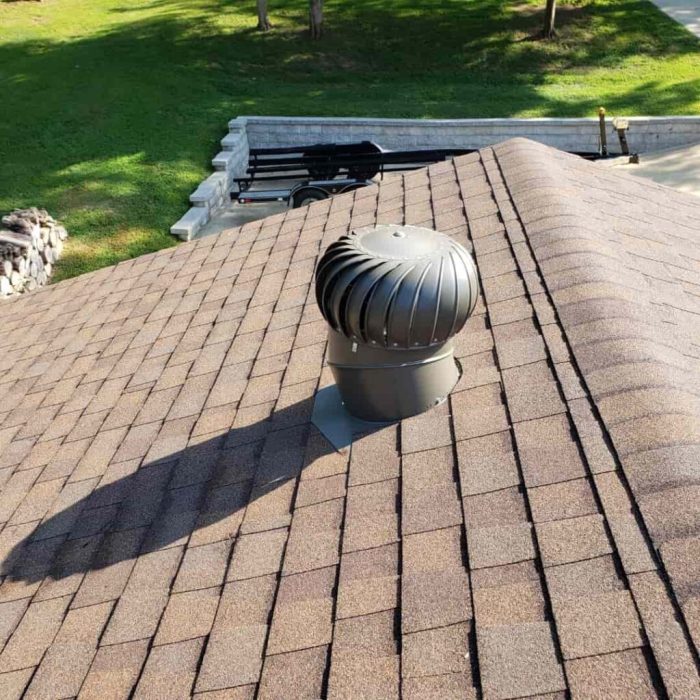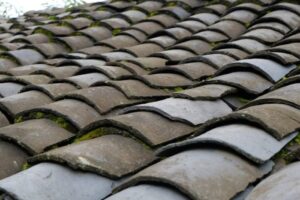
Roof ventilation upgrades are essential for homeowners looking to enhance their living environment while also improving energy efficiency. Proper ventilation not only helps regulate indoor temperatures but also extends the lifespan of roofing materials by preventing overheating and moisture buildup. As we delve into this topic, you’ll discover how these upgrades contribute to better air quality and overall comfort in your home.
Exploring various types of roof ventilation systems, from passive to active solutions, we’ll highlight their effectiveness and installation processes. Additionally, you’ll learn how roof ventilation interacts with broader home improvement projects, ensuring that your home remains secure and efficient.
Importance of Roof Ventilation Upgrades

Upgrading roof ventilation is a crucial aspect of maintaining a healthy and energy-efficient home. Proper ventilation systems play a vital role in regulating temperature and moisture levels in the attic, which can significantly impact both your living environment and the overall integrity of your roofing system. This discussion highlights the numerous benefits of enhancing roof ventilation, focusing on energy efficiency, the longevity of roofing materials, and improvements in indoor air quality.
Benefits for Energy Efficiency
Improved roof ventilation directly affects energy consumption by maintaining a more stable temperature within the home. When hot air accumulates in the attic during summer months, it can cause increased reliance on air conditioning systems. By enhancing ventilation, this excess heat is expelled more effectively, leading to lower energy bills. Key benefits include:
- Reduction in air conditioning costs: Proper ventilation can lower indoor temperatures, reducing the need for cooling systems to work overtime.
- Improved thermal performance: Enhanced airflow helps keep living spaces cooler in the summer and warmer in the winter, contributing to overall energy efficiency.
- Increased home comfort: Balanced temperatures throughout the home create a more comfortable living environment for occupants.
Longevity of Roofing Materials
Roof ventilation upgrades are essential for prolonging the lifespan of roofing materials. When moisture is allowed to accumulate in the attic, it can lead to issues like mold growth, wood rot, and shingle deterioration. By ensuring proper airflow, roofing materials can dry out more effectively, reducing the risk of damage.Considerations include:
- Prevention of mold and mildew: Improved ventilation helps to control humidity levels, significantly reducing the risk of mold growth.
- Protection against ice dams: In colder climates, proper ventilation minimizes the risk of snow melting on the roof and refreezing at the eaves, which can cause ice dams and subsequent leaks.
- Extended lifespan of roofing materials: By preventing moisture-related issues, roofing systems can last longer, delaying the need for costly repairs or replacements.
Impact on Indoor Air Quality and Comfort
Effective roof ventilation contributes to healthier indoor air quality by facilitating the circulation of fresh air throughout the home. This circulation helps to remove stale air, pollutants, and excess humidity, creating a more comfortable and safer environment for residents.Important points include:
- Reduction of indoor pollutants: Proper ventilation helps to filter out indoor air contaminants, leading to cleaner air quality.
- Control of humidity levels: By regulating moisture, ventilation systems prevent issues like condensation, which can lead to discomfort and health problems.
- Enhanced overall comfort: A well-ventilated attic contributes to consistent temperatures, reducing hot and cold spots within the home.
Types of Roof Ventilation Systems

When it comes to maintaining a healthy and efficient home, understanding the various types of roof ventilation systems is crucial. Proper ventilation helps regulate temperature and moisture levels, ultimately leading to a more comfortable living environment. There are several systems available to homeowners, each with its own advantages and disadvantages.
Passive Ventilation Systems
Passive ventilation relies on natural airflow to circulate air throughout the home. These systems do not require any mechanical components, making them a cost-effective solution for many homeowners. Common types of passive ventilation systems include ridge vents, soffit vents, and gable vents.
- Ridge Vents: Installed at the peak of the roof, these vents allow hot air to escape while drawing in cooler air from the eaves, creating a natural airflow.
- Soffit Vents: Placed in the underside of eaves, soffit vents work in conjunction with ridge vents to enhance airflow. They are crucial in providing the intake needed for ridge vents to function effectively.
- Gable Vents: Located at the end of the attic, gable vents allow for cross-ventilation by facilitating airflow through the attic space.
Active Ventilation Systems
Active ventilation systems use mechanical fans to enhance airflow, making them especially beneficial in areas with high humidity or temperatures. These systems include attic fans and whole-house fans, which can significantly improve air exchange rates.
- Attic Fans: Mounted in the attic, these fans expel hot air, allowing cooler air to enter from outside. They can be thermostat-controlled to operate only when temperatures exceed a certain threshold.
- Whole-House Fans: Installed in the ceiling, these fans pull cool air into the home while exhausting warm air through windows. They are particularly effective during cooler evening hours.
Comparison of Passive and Active Ventilation Solutions
Both passive and active ventilation systems have unique benefits that cater to different needs within residential properties.
Passive systems are energy-efficient and low-maintenance, while active systems provide enhanced control over air circulation.
Active systems tend to be more effective in areas where passive airflow is insufficient, but they also involve higher installation and operational costs. Homeowners should consider their climate, roof type, and budget when deciding between these options.
Installation Process of Roof Ventilation Systems
The installation of roof ventilation systems varies depending on the type chosen. Proper installation is key to ensuring efficiency and effectiveness.
- For Passive Ventilation:
- Ridge Vents: Cut a slot along the peak of the roof, fit the vent, and secure it with roofing nails.
- Soffit Vents: Cut holes in the soffit, insert the vents, and seal them to prevent moisture entry.
- Gable Vents: Create an opening in the gable wall, install the vent, and ensure it’s securely fastened.
- For Active Ventilation:
- Attic Fans: Cut an opening in the roof or gable, mount the fan, and connect it to a power source.
- Whole-House Fans: Install in the ceiling between the attic and living space, ensuring proper sealing and electrical connections.
Each installation process should be conducted with care, adhering to local building codes and guidelines to ensure optimal performance and safety.
Related Home Improvement Areas
Roof ventilation plays a crucial role in enhancing the overall performance of a home’s roofing system. When properly designed and installed, roof ventilation can significantly improve energy efficiency, prolong the lifespan of roofing materials, and contribute to a healthier living environment. This interconnected relationship highlights the importance of considering roof ventilation within the broader scope of home improvement projects.Roof ventilation upgrades not only enhance energy efficiency but also play a vital role in home security by preventing moisture damage.
Excess moisture buildup can lead to mold growth, which not only affects air quality but can also weaken structural components of the home. By ensuring adequate air circulation, proper ventilation serves as a barrier against moisture-related issues that could compromise home integrity.
Integration of Roof Ventilation Upgrades with Other Home Improvement Projects
Integrating roof ventilation upgrades with other home improvement projects can maximize benefits while minimizing additional costs. When planning roof ventilation improvements, it is essential to consider the following related areas:To effectively align roof ventilation with other home improvements, homeowners should consider:
- Insulation Improvements: Upgrading insulation can enhance the effectiveness of ventilation systems. Proper insulation paired with adequate ventilation can prevent heat retention in the summer and heat loss in the winter, creating a more comfortable home environment.
- Roof Replacement: When replacing the roof, it is an ideal time to assess and upgrade the ventilation system. New roofing materials may offer better compatibility with modern ventilation solutions, enhancing overall performance.
- Window and Door Sealing: Ensuring that all windows and doors are properly sealed can complement ventilation upgrades. This prevents drafts and helps maintain controlled airflow, while also improving overall energy efficiency.
- HVAC System Enhancements: Upgrading heating, ventilation, and air conditioning (HVAC) systems can work in unison with roof ventilation improvements. A well-ventilated attic can reduce the load on the HVAC system, leading to lower energy bills and increased system longevity.
By approaching home improvements holistically, homeowners can optimize their investments and create a cohesive plan that leads to greater efficiency and comfort.
“Proper roof ventilation is a critical component of a healthy home, impacting both comfort and structural integrity.”
Summary
In summary, upgrading your roof ventilation is a smart investment for energy efficiency, material longevity, and indoor comfort. By understanding the different systems available and their interconnectedness with other home improvements, you can make informed decisions that benefit both your living space and the environment. Don’t overlook the significance of ventilation; it’s a crucial element in maintaining a healthy, comfortable, and energy-efficient home.
FAQ Summary
What is roof ventilation?
Roof ventilation refers to the system of air flow that helps regulate temperature and moisture in the attic and throughout the home.
How do I know if my roof needs ventilation upgrades?
Signs include poor indoor air quality, excessive heat in the attic, and visible mold growth or moisture damage on roofing materials.
What are the benefits of passive versus active ventilation?
Passive ventilation relies on natural airflow, while active ventilation uses mechanical systems to improve air movement, often providing quicker results.
Can roof ventilation systems help reduce energy bills?
Yes, improved ventilation can lower energy costs by reducing the need for air conditioning and heating.
How often should roof ventilation be checked or maintained?
It’s recommended to inspect roof ventilation systems at least once a year, particularly before extreme weather seasons.







